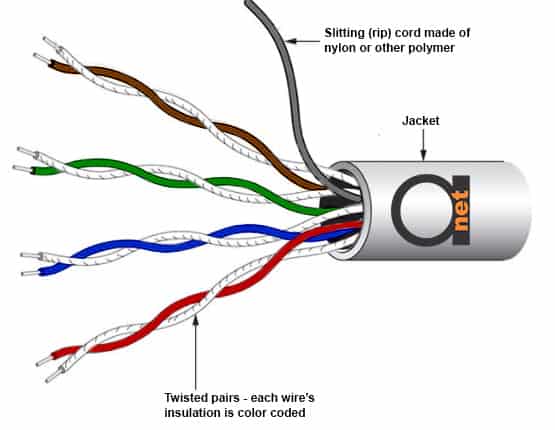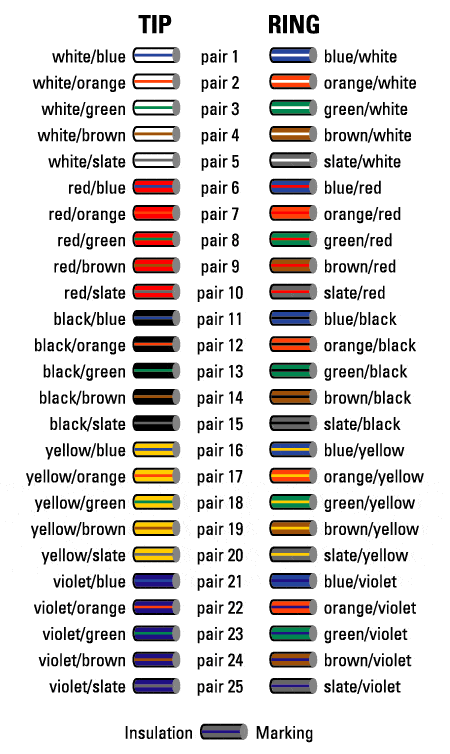Wire Insulation
Data cabling consists of an outer cable jacket covering the wire pairs. The wires must be insulated with a material that has a very low dielectric constant and low dissipation factor. First factor, to be considered when we discuss wire insulation, is dielectric and dissipation factor.
Dielectric and dissipation factor: A material with good dielectric properties does not conduct electricity, i.e. dielectric materials are insulators. With LAN cables, a good dielectric material also has properties that assist the transmission of high-frequency signals in the conductors. The dissipation factor is a measure of the loss-rate of power and as such, is the main factor that determines loss at frequencies.
Wire Insulation Materials
A number of insulating materials are used, including fluorocarbon polymers, polyolefin (polypropylene and polyethylene) and PVC.
Manufacturers select materials based on flame-test ratings, cost and desired transmission properties. Materials such as polyolefin have great transmission properties and are inexpensive, but are highly flammable, and must be used in together with materials with better flame ratings.
It is important not to focus on a particular material, but rather look at the material system selected by the manufacturer. Manufacturers choose jacketing and insulating materials that work together based on the delicate balance between transmission performance, fire resistance and economics.

Figure 1: Each wire’s insulation is color coded
Fluorocarbon polymers are most commonly used to insulate wire pairs in Category 5e and greater plenum rated cables. Two varieties of fluorocarbon polymers often used are perfluoroalkoxy (PFA) and fluorinated ethylene-propylene (FEP).
DuPont originally developed these polymers and they are often referred to as Teflon, which is actually their trademark. FEP is most commonly used and is the most desirable of these materials.
The demand for plenum-grade cables has surpassed the supply of FEP in the past few years. As a result of this shortage, Category 5e plenum designs have been developed where another material is substituted for one or more of the pairs of wire. Some instances of marginal performance were also seen in the UL-910 burn test for plenum cables. These concerns, together with the increase of FEP supply and substitutes like MFA, have decreased the usage of these designs.
TIP: When buying Category 5e and higher plenum cables, check if other materials have been used in combination with FEP for insulation.
In non-plenum Category 5e and higher cable, and in lower category cables, cheaper and more readily available materials, such as HDPE (high-density polyethylene), are used. Transmission performance won’t be sacrificed – less stringent flame test requirements simply allow for less expensive materials to be used.
Insulation Colors
The wire insulation in UTP cables is color-coded. This standardized color codes helps cable installers make sure each wire is connected correctly. In the United States, the color code is based on 10 colors.

Figure 1: Insulation colors
Five of these are used on the ring conductors, and five are used on the tip conductors. Combining the ring colors with the tip colors allows for 25 possible unique pair combinations. 25 pair groups have therefore been used for telephone cables for decades.
The words ring and tip originated in the days of manual switchboards. Phono-type plugs (like those on a stereo headset cord) were plugged into a socket to connect one extension or number to another.
The plug consisted of a tip, then an insulating disk, and then the shaft of the plug. One conductor of a pair was soldered into the tip and the other soldered to the shaft, or ring. 25-pair cables are not often used in data cabling, but are often used for voice cabling for backbone and cross-connect cable.


